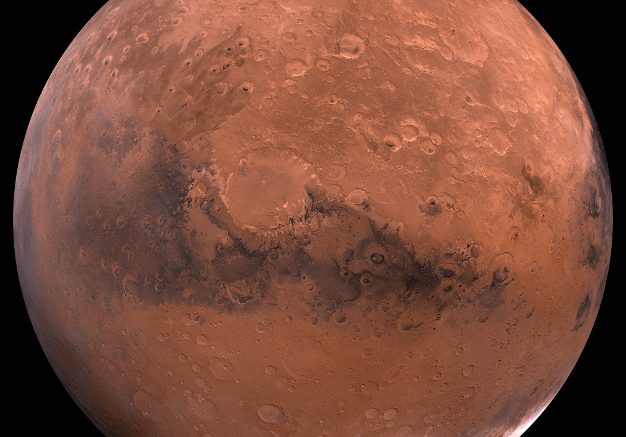—Two years after a humble potato patch co-starred in “The Martian,” scientists have found that fictional astronaut Mark Watney’s strategy for surviving on the Red Planet could actually work.
Early last year, a spud was planted in soil from Peru’s Pampas de La Joya desert, which boasts “the most Mars-like soils found on Earth,” according to NASA scientist Chris McKay. The experiment, sponsored by the International Potato Center (CIP), took place in a CubeSat built by Peru’s University of Engineering and Technology (UTEC) with guidance from NASA’s Ames Research Center.
“If the crops can tolerate the extreme conditions that we are exposing them to in our CubeSat, they have a good chance to grow on Mars,” explains UTEC’s Julio Valdivia-Silva.
A live stream from the CubeSat, at the International Potato Center in Lima, Peru, shows the potato in bloom, giving hope to both future astronauts and Earthlings at risk of famine. [ An earlier version misstated the location of the CubeSat.]
“This [research] could have a direct technological benefit on Earth and a direct biological benefit on Earth,” Dr. McKay predicts.
In 2015, about 795 million people were reported to be undernourished globally. While that represents a decline from previous years, the UN’s Food and Agriculture Organization reports that it sees climate change as a major threat to future progress.
While they’ve fallen short at times – most famously in the Irish Famine of the 1840s – potatoes are a prime candidate to feed a warmer, more populous world. Versatile and nutritious, potatoes are already the world’s most popular non-grain food crop, and rank in the “upper echelon” of crops that researchers hope will ensure future food security.
The International Potato Center documents more than 4,000 varieties of edible potato, capable of growing everywhere from the windswept plains of Idaho to the salty coasts of Bangladesh – and, hopefully, in a climate-controlled facility on Mars.
When the “Potatoes on Mars” experiment began, researchers weren’t sure how far the benefits would reach.
“If Martian soil can’t sustain potato farming,” The Christian Science Monitor reported last April, “it might be possible to grow the spuds without soil by hydroponics and aeroponics…. Hydroponics deliver nutrients in water, while aeroponics deliver them by air.” That outcome would likely still have value; NASA says that spacecraft-grown plants could improve the taste and nutrition of astronauts’ diets.
But with a potato able to grow in simulated Martian soil, the results of this experiment – and follow-up testing – are also likely to be reaped by low-tech subsistence farmers around the world.
Originally posted at the Christian Science Monitor


